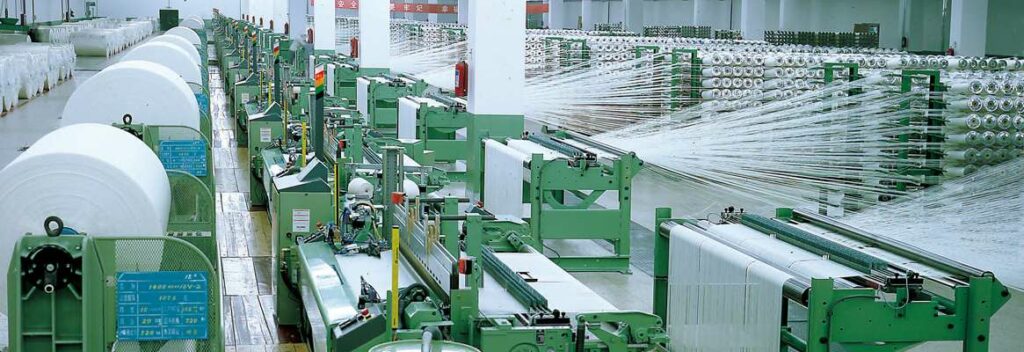Project Report For Weaving Industry
Introduction
Project report on weaving industry is as follows.
Weaving is the process of creating fabric by crossing two sets of threads at right angles. This is often done with a hand or power operated loom.
Cloth is woven on a loom, which holds the warp threads in position while filler threads are interwoven through them. Weft, an Old English word, refers to “something which is woven.” The pattern created by the interlacing of the warp and filler threads is known as the weave. One of the three main weaves—twill, satin weave, or plain weave—is used to create the majority of woven products.
The woven fabrics with ornamental or artistic motifs include tapestries and plain cloth (one color or a simple pattern). Both hand spinning and handweaving are popular traditional crafts. On computer-controlled Jacquard looms, the vast majority of commercial fabrics in the West are woven. Dobby looms were used in the past to weave simple fabrics, which were only used for more complex designs. Despite the complicated design, some people think that mills would find it more practical to weave all of their fabrics using the Jacquard loom and weaving technique.

The hardest-hit handloom weavers are those that produce traditional goods like saris, dhotis, bed linens, and shawls. They also contribute to production. 12.4 million, or around 33%, of the 38 million persons working in the weaving industry are concentrated in this shrinking subsector. Most of them are from low castes, quite poor, and employed in small families. Women make up more than 40% of weavers.
Project Report Sample On
Weaving Industry
Get Completely Custom Bankable Project Report
Banarasi silk saris created in Varanasi have long been prized for their expensive, exquisitely designed fabric. Every Indian wedding has to include them. More than 600,000 weavers in Varanasi and the surrounding areas primarily serve the local market. The 1990s saw a decline in the fortunes of the silk handloom weavers who produce Banarasi saris. Trade liberalization, which wealthy nations and international financial institutions vehemently pursued at the expense of the world’s poor, has spurred economic globalization.
Market Potential Of Weaving Industry
The Indian textile and apparel market is anticipated to reach US$190 billion by 2025–2026, growing at a 10% CAGR.
India is the world’s top producer of cotton. Cotton was produced in bales totaling 362,18 lakh during the growing season of 2021–2022. 338 lakh bales of cotton are anticipated to be consumed in the domestic cotton season of 2021–2022. India produced 2.40 MT of fiber and 4,762 million KGs of yarn in FY21 (which ended in January 2021). India’s textile and apparel exports (including handicrafts) surged by 41% YoY to $44.4 billion in FY22. In FY22, ready-to-wear garment exports reached a total of US$6.19 billion, including cotton accessories. Cotton was produced in bales totaling 362,18 lakh during the growing season of 2021–2022. 338 lakh bales of cotton are anticipated to be consumed in the domestic cotton season of 2021–2022.

India produced 2.40 MT of fiber and 4,762 million KGs of yarn in FY21 (which ended in January 2021). India’s textile and apparel exports (including handicrafts) surged by 41% YoY to $44.4 billion in FY22. In FY22, ready-to-wear garment exports reached a total of US$6.19 billion, including cotton accessories.
The Indian weaving industry has historically been one of the most promising industries for creating lots of jobs. In fact, the Weaving Industry is the greatest employer in the labor force after Agriculture. The success of India’s weaving industry is largely attributed to the availability of cheap labor and an abundance of raw materials. However, the Indian weaving industry has been badly impacted by the liberalization of global trade and changes to domestic economic reforms. At the historic centers of the Indus Valley Civilization, Mohenjo-Daro and Harappa in India, pieces of woven cotton and bone needles were found.
